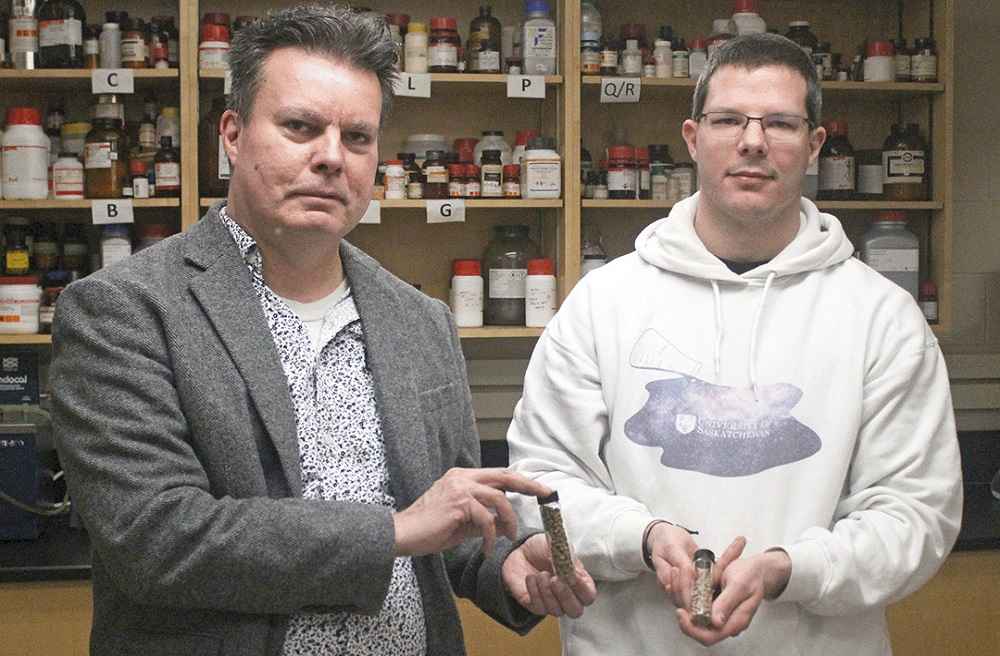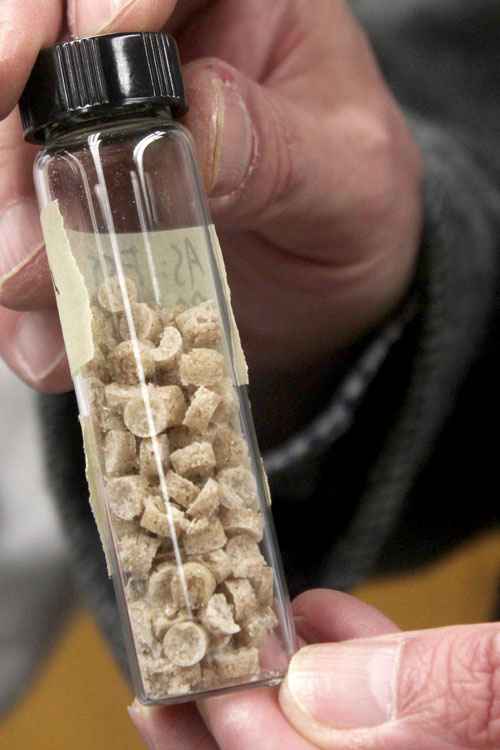
Researchers at the University of Saskatchewan in Canada have developed a plastic-like material that can absorb excess nutrients from water and be used as a fertilizer when it decomposes.
The product – a “bioplastic” material – has been created by University of Saskatchewan (USask) chemistry professor Lee Wilson, PhD, and his research team.
This bioplastic material is a biocomposite pellet that contains a marine polysaccharide (chitosan), eggshells and wheat straw. The pellet is its own “closed loop” material that absorbs phosphate from water sources and is then used as a fertilizer source for agricultural applications.
This closed loop system offers a potential alternative solution to mining phosphate and instead using the nutrient already present in water sources. It is also an alternative to products that use plastic coatings to deliver fertilizer to agricultural land, eventually becoming microplastic pollution.
Wilson said bioplastic material pellets they’ve developed function as an absorbent, taking phosphate out of the water and, once dried, can be distributed as an agricultural fertilizer.

In an interview with New AG International, Wilson said the project that developed the pelletized bioplastics wasn’t initially to look at fertilizer release, “it was more so to look at new types of composite materials that had absorption properties,” he said. “We had made some of these pelletized materials as far back as 2017, but the activity has increased since about 2020, up to the present. The focus was on absorbent materials because there’s certain advantages that these pelletized materials have.”
Over the last year, Wilson and his team, consisting of PhD candidate Bernd G. K. Steiger, BSc student Nam Bui and postdoctoral fellow trainee Bolanle M. Babalola, have been dedicated to this agricultural use of the bioplastic pellets.
“We had some little side routes into that area even before that time. But this was more of a concerted effort to say, OK, these pellets are fairly sustainable and could be used sort of like a double closed loop system,” noted Wilson. “The one closed loop would be converting waste into a value-added material, while the second loop is using that material to sequester phosphate from groundwater to address environmental remediation an agricultural needs.”
Wilson, a chemistry professor in the Department of Chemistry within the College of Arts and Science, and is currently working collaboratively with the university’s College of Agriculture to see how the material would work in a field setting.
“We want to demonstrate that these materials have some promise,” he said. “We’d also be interested in looking at projects with industry as well. This could be done in parallel to our ongoing research work at the university.
“I think based on recent results, this will be something that would be of high commercial interest to companies that are working on controlled release fertilizers or slow released fertilizer systems.”
The research was detailed in a paper published in the Royal Society of Chemistry Sustainability Journal.